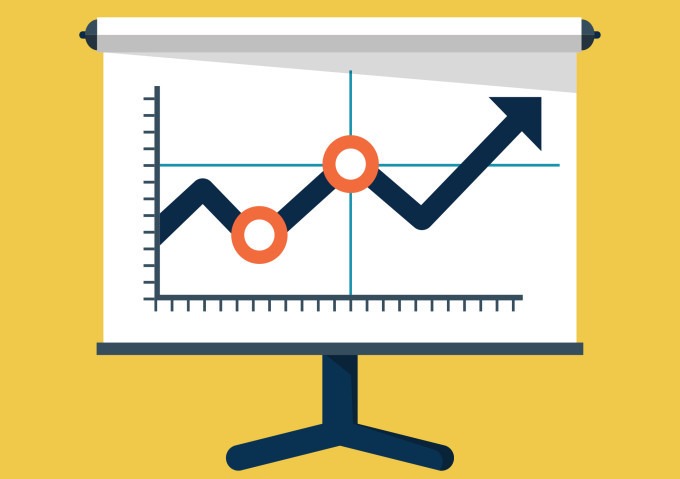If you are looking to launch a scalable business, you may find the prospect daunting. Launching a startup or running a small business is a full-time job, and there is precious little time at the end of the day to think about ways to scale product or sales.
To successfully ensure your business will scale, consider the 10 steps below:

1. Secure Your Investment Capital
The first step should be ensuring that you have the financial ability to support the scaling activities. Even if you are starting in early design and prototyping or small production runs, the process will require funding. Don’t underestimate the amount of money it takes to launch and scale a business, so do some very careful analysis of your finances before plunging into full-scale production.
If you are lucky enough to have all the capital you need, then you can skip right to developing a prototype, but most people aren’t that lucky. You will probably need to attract some outside funding from angel investors. Attracting angel investors is a skill in itself, but you can learn more about the process here.
2. Develop a Prototype
If you need an angel investor to ramp up, developing a prototype for your presentations is a must. Even if you are self-funded, a prototype can make the rest of the process much simpler. A prototype will help you in market research and in securing your first production orders.
When you are ready to develop a prototype, work with a company that specializes in prototyping as well as high-volume production scale runs. A company with skills in both high-volume production runs and prototyping can ensure that your design is optimized for production. Engineers who are familiar with the entire manufacturing process, can recommend subtle design changes that improve the product’s manufacturability, increasing quality and saving you money in the long run. Ensuring product scalability should be as much a part of the prototyping process as the proof of concept is.
Knowledgeable engineers can also help you to understand the costs of production tooling and the standard lead time you can expect once you ramp up production levels. Having the right information will help you ensure on-time delivery of those first crucial orders.

3. Market Research
When you have your prototypes in hand, head out for some additional market research. You will want to show the prototype to some real-world potential customers. Let them work with the prototype hands on, if possible, and observe how they use it. Ask yourself the following questions as you watch users interact with the prototype:
Does it solve the problem you’re trying to solve?
Is it easier for the user than the previous solution?
Does the user have to take additional steps or is the prototype a complete solution?
During this phase, you are trying to ensure that you have a minimally viable product (MVP) ready to hit the market. As customers use your prototype, they may make product or feature suggestions. This is the exact result you want, because it shows that the customer is envisioning using your product to solve the problem. Your response to every suggestion should be “That’s a great idea. Would you buy and be able to use the product if it didn’t do that?” You are looking to define the product that will prompt customers to buy without the additional development cost of adding features that may not affect the product’s acceptance or salability.
4. Finalize Your Design
With your market research on a minimally viable product and design suggestions from engineers that will improve product scalability, you are ready to finalize your product design. You should continue working with a knowledgeable engineering team who can provide guidance and advice that will help your product scale. It’s critical that the final product is scalable and structurally sound.
5. Orchestrate Your Supply Chain
Now that you have ensured your product’s physical scalability, it’s time to set up the rest of your supply chain.
Begin with your sales forecast, and decide how much inventory you want or can afford to carry. You will want to collaborate with your key vendors to be sure you know the standard lead time for new orders, and options and fees for expedited deliveries if your sales forecast is lower than actual demand. If orders don’t materialize, will you have to pay cancellation or storage fees?
You need to know where you will be storing your inventory. If you have a storage facility, you may already know. Otherwise, you may need to lease space in a public warehouse. If that’s the case, you need to decide if you want to use a single centrally located warehouse or have multiple distribution centers located near your expected customers.
Decide how you will ship your product, and what you will offer as a standard lead time and for expedited deliveries.
Chart your entire supply chain from purchase order to delivery to the customer, so you know exactly how long it will take. Decide at which steps you want to have work in process or finished goods inventory, and how much.
Consider how you will manage to make deliveries if there is an interruption in your supply chain. Identify an alternate source of supply you can call if you need to.
Inventory is a strategic investment, but you don’t want to use all of your capital. Do a final review of your supply chain to be sure that it is as streamlined as you can make it.

6. Document Your Business Processes
You will also need to define and document your business processes. If you have an ERP or other business system, many of your processes will already be defined for you, so all you will need to do is review them to eliminate unnecessary steps. If your company is still just you and a few chosen leaders, you may not have to worry about purchasing approval levels and other similar details. However, even with a small team it is a good idea to make it clear who can commit to the company’s funds, and to what degree.
As you grow, you will be glad you invested the time up front to document your business processes. It will make it much simpler to bring new employees on board as you’re scaling a business. Wherever possible, automate and systemize your processes to create maximum efficiency.
7. Create Tooling and Ramp Up Production
With all the details in place, you are ready to go into full production-scale mode. Work with engineers at key suppliers to decide on the most cost-effective tooling options, if you didn’t create tooling during the prototype phase.
8. Fine Tune Your Business Plan
Give your business plan a final review. Have any of your assumptions proven to be false? Make adjustments as needed.
9. Launch and Go to Market
Take the time to be sure your product documentation is ready, and if you have a FAQ, make sure it’s up to date. Is your sales team ready and fully trained? Do you have adequate marketing collateral? If everything is a go, then at long last the big day is here and you are ready to launch your product.
10. Refine Your Plan
Carefully monitor every aspect of your business, especially during the early days. Consider it part of your continuous improvement process, and make adjustments as necessary. You may find that scaling a company is different from what you expected, but no matter what situation arises, you will have done everything you can to ensure success if you follow this plan for scaling a business.


